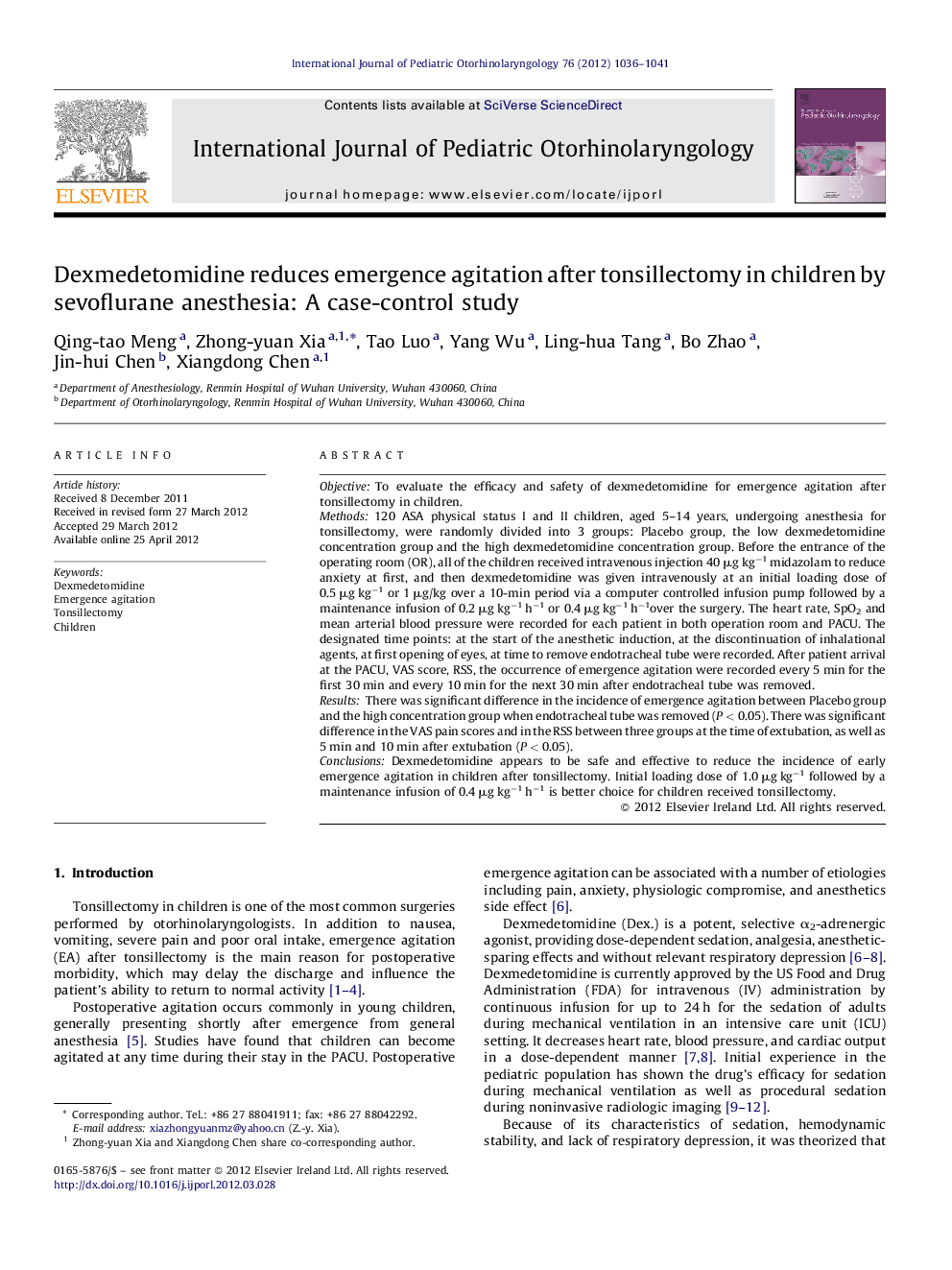| Article ID | Journal | Published Year | Pages | File Type |
|---|---|---|---|---|
| 4113410 | International Journal of Pediatric Otorhinolaryngology | 2012 | 6 Pages |
ObjectiveTo evaluate the efficacy and safety of dexmedetomidine for emergence agitation after tonsillectomy in children.Methods120 ASA physical status I and II children, aged 5–14 years, undergoing anesthesia for tonsillectomy, were randomly divided into 3 groups: Placebo group, the low dexmedetomidine concentration group and the high dexmedetomidine concentration group. Before the entrance of the operating room (OR), all of the children received intravenous injection 40 μg kg−1 midazolam to reduce anxiety at first, and then dexmedetomidine was given intravenously at an initial loading dose of 0.5 μg kg−1 or 1 μg/kg over a 10-min period via a computer controlled infusion pump followed by a maintenance infusion of 0.2 μg kg−1 h−1 or 0.4 μg kg−1 h−1over the surgery. The heart rate, SpO2 and mean arterial blood pressure were recorded for each patient in both operation room and PACU. The designated time points: at the start of the anesthetic induction, at the discontinuation of inhalational agents, at first opening of eyes, at time to remove endotracheal tube were recorded. After patient arrival at the PACU, VAS score, RSS, the occurrence of emergence agitation were recorded every 5 min for the first 30 min and every 10 min for the next 30 min after endotracheal tube was removed.ResultsThere was significant difference in the incidence of emergence agitation between Placebo group and the high concentration group when endotracheal tube was removed (P < 0.05). There was significant difference in the VAS pain scores and in the RSS between three groups at the time of extubation, as well as 5 min and 10 min after extubation (P < 0.05).ConclusionsDexmedetomidine appears to be safe and effective to reduce the incidence of early emergence agitation in children after tonsillectomy. Initial loading dose of 1.0 μg kg−1 followed by a maintenance infusion of 0.4 μg kg−1 h−1 is better choice for children received tonsillectomy.
